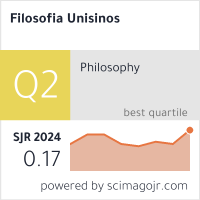Parmenides’ first and second hypotheses, auta ta homoia, and Socrates’ astonishment
DOI:
https://doi.org/10.4013/fsu.2020.212.05Abstract
In this paper, I propose a new interpretation for two of the most debated passages of Plato’s Parmenides: Socrates’ long speech (128e5–130a2) and Parmenides’ first antinomy (137c-155e). My aim is to demonstrate: 1) that Socrates’ speech can only make sense if we understand auta ta homoia as a third kind of entity, the immanent property sensibles have by participating in the form of Likeness; 2) that the first two hypothesis of the second part of the dialogue (137c-155e), together with Parmenides’ criticism in the first part of the dialogue (130b-134e), is an answer to Socrates’ challenge (128e-130a). Parmenides’ arguments aim to show that, according to Socrates’ own premises, it is not possible for forms or immanent properties to be the kind of unity Socrates wants them to be. Finally, 3) I will use these results to suggest an innovative answer to the vexed question about the relation between the first and second parts of the Parmenides. According to my interpretation, the exercise of the second part of the dialogue does not provide the solution to Parmenides’ criticism of the theory of forms, despite what the majority think today. Rather, it radicalizes this criticism by pointing to a fundamental miscomprehension on Socrates’ conception of what it is to be a unity.
Keywords: Plato, Parmenides, unity, ontology, forms.
Downloads
Downloads
Published
How to Cite
Issue
Section
License
I grant the Filosofia Unisinos – Unisinos Journal of Philosophy the first publication of my article, licensed under Creative Commons Attribution license 4.0 (which allows sharing of work, recognition of authorship and initial publication in this journal).
I confirm that my article is not being submitted to another publication and has not been published in its entirely on another journal. I take full responsibility for its originality and I will also claim responsibility for charges from claims by third parties concerning the authorship of the article.










